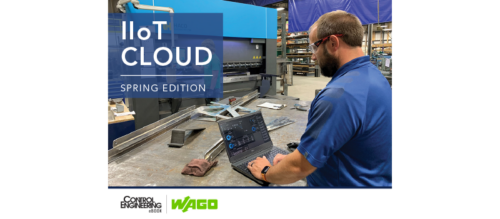Supply chain redesign gives Volvo CE options in after-sales service
Not long ago, fast-growing Brussels, Belgium-based Volvo Construction Equipment (CE) saw it faced a challenge with its after-sales spare parts supply chain—especially in the company's increasingly important North American market.
Not long ago, fast-growing Brussels, Belgium-based Volvo Construction Equipment (CE) saw it faced a challenge with its after-sales spare parts supply chain—especially in the company’s increasingly important North American market. At the root of the difficulty was the awkward fact that large, expensive earthmoving equipment only earns money for its owners when it’s actually working—moving earth.
But all too often, when owner-operators went to Volvo CE’s after-sales counters to pick up parts needed to get excavators, backhoes, and graders moving again, those parts were only available over-the-counter some 60 percent to 70 percent of the time—far below the level that either Volvo CE or its customers regarded as acceptable.
Sales of new equipment suffered, as the marketplace saw competitors offered better after-sales service.
The solution lay in Volvo redesigning its supply chain and putting in place a global supply chain planning application from Syncron International that allowed Volvo CE to model options for improving service, choosing a strategy, and then putting that plan into practice.
A new supply chain vendor
Syncron is a relatively new entrant in the supply chain management software space, at least in North America, where it recently opened its first office in Chicago to better serve its multinational customers. The company says its solutions represent a new class of process-centric and service-oriented software applied to supply chain optimization across functions, systems, and geographies—within as well as between companies. Its “best-of-breed” applications, the company says, operate independently of the underlying IT infrastructure and ERP systems, while integrating with them.
Certainly one major goal of supply chain management systems today is to enable visibility into business processes that extend over multiple enterprise systems—either within a company of former or still-independent units, or across multiple legal entities.
Syncron customers today include Atlas Copco, Tetra Pak, Metso, Alfa Laval, Renault, Trelleborg, Electrolux, Dynapac, Wilkinson, and Messier Dowty.
“Typically, manufacturers aim to optimize their forecasting and inventory management processes at the local and regional level,” says Syncron CEO Anders Gruden. “Instead, we help them optimize their global supply chains—and the difference can be significant.”
The goal for Volvo CE was improved forecasting and planning based on the latest planning technology, but also genuine changes in the flow of goods within the supply chain inside one of Volvo CE’s many supply chains.
Such twin-track approaches to supply chain management—optimize and redesign, in other words—are increasingly common, observes Bill Read, Cleveland-based head of New York-headquartered consulting firm Accenture ‘s U.S. supply chain strategy group.
“Supply chains are more global than ever, and there’s far greater insight to customer demand than ever before,” says Read. “With the realization that you don’t need to treat all customers exactly the same comes recognition that you can adopt granular and very different approaches to meeting their needs—serving them through multiple supply chains. Manufacturers are evaluating customers’ needs more precisely that ever before, and then building a supply chain to order.”
Strategic design considerations
Systems for supply chain design—or Strategic Modelling in Syncron’s lexicon—begin with strategic network optimization, including the number, location, and size of warehouses, distribution centers, and facilities. Other areas of supply chain strategic concern might include the following areas:
Partnerships with suppliers, distributors, and customers, creating communication channels for critical information and operational improvements such as cross-docking, direct shipping, and third-party logistics;
Product design coordination, so that new and existing products can be optimally integrated with the supply chain;
Information technology infrastructure; and
Where-to-make and what-to-make-or-buy decisions.
Moreover, says Syncron, new strategies that impact, for example, stock-investment or client-service levels, can be simulated and the results analyzed prior to implementation, reducing the risk inherent in new strategies and policies.
Syncron says its Strategic Modelling module can simulate a wide range of such scenarios and recommend stock levels required in each case, including these examples:
Simulate capacity changes to production plans;
Simulate impact on current production plans of new orders being placed with a higher priority;
Simulate additional stock required when supplier performance is an issue;
Analyze impact on stocks levels when adjusting target service levels to customers; and
Perform ABC product segmentation and analyze impact of different inventory management policies.
Results at Volvo CE
Volvo CE’s 300 dealers around the world—which collectively must supply more than 750,000 parts to end users—are today connected by a portal to a single order interface. This, says Gruden, shows them the entire inventory in the system, wherever it is located, enabling them to order from the nearest warehouse with adequate stock of the part in question.
“Usually, dealers are ‘connected’ to a single warehouse in terms of parts sourcing, and it’s the job of the warehouse to source from another warehouse if it doesn’t have stock,” says Gruden. “By automatically ordering in real time from the nearest warehouse with adequate inventory, you’re shrinking lead time: The part will be available tomorrow at 3 p.m., and not the day after tomorrow at 3 p.m.”
Another innovation was to redesign the supply chain to permit direct shipment of parts from Volvo CE’s suppliers to end customers—thereby circumventing not only the need to ship via warehouses, but also through dealers. Begun 18 months ago, direct shipment isn’t used for everyday parts such as oil filters and hoses, but rather for large, heavy items such as replacement earthmoving buckets, where demand is irregular, volumes low, and logistics costs high.
The outcome of the systems improvements, says Claudio Strobl, head of logistics at Volvo CE, has been that—after adjusting for growth and acquisitions and the ability to carry an increased assortment of parts—after-sales inventory has gone down by around 25 percent, even as over-the-counter availability of spare parts has increased to a “best-in-class” performance of 95 percent.
“We’re gaining market share on both earthmoving machines and spare parts, and that success is directly traceable to the investment we have made with Syncron,” he says.
Ways to think about it
“Leveling the playing field,” by calibrating product, component, and material costs in terms of their total landed, or delivered, cost—as well as factors such as freight costs, additional inventories, and tariffs, for example—provides a basis for better understanding of how supply chains differ, says Jeff Karrenbauer, president of INSIGHT , a software and consulting firm specializing in strategic supply chain management issues—and in particular, the risks inherent in their designs.
Volvo Construction Equipment faced challenges in after-sales service, which it addressed by means of a supply chain planning solution that optimized delivery of needed parts to customers.
“Risk to your reputation, risk of intellectual property theft, and risk of supply chain disruption—there are serious costs associated with all three, and we don’t see enough companies taking them into account,” says Karrenbauer. “In particular, companies that disregard the very real risks of supply chain disruption are playing with fire. It’s not the risk of a ship being two days late. It’s the risk of port closures, border closures, or of sudden industry nationalization.
“Of course, steps can be taken to mitigate the risk involved, at a cost,” Karrenbauer continues. “But assuming it will never happen is taking a very large gamble—and taking it without knowing the odds, or even the size of the bet.”
In part, better supply chain visibility helps companies understand and mitigate such supply chain risks.
“Going forward, supply chains must have significantly more inbuilt visibility than they have now,” says Phil Friedman, VP for consumer products and life sciences at enterprise system provider QAD . “End customers are increasingly demanding full traceability—not just at one level removed, but two or three.”
For the manufacturer, adds Friedman, there’s a cost to this, but also a benefit. The more granular the visibility, the greater the insight to where problems actually lie. Disruption can be lessened if only one particular batch of a faulty product must be recalled—as opposed to a whole shipment, or production run.
Do you have experience and expertise with the topics mentioned in this content? You should consider contributing to our CFE Media editorial team and getting the recognition you and your company deserve. Click here to start this process.





